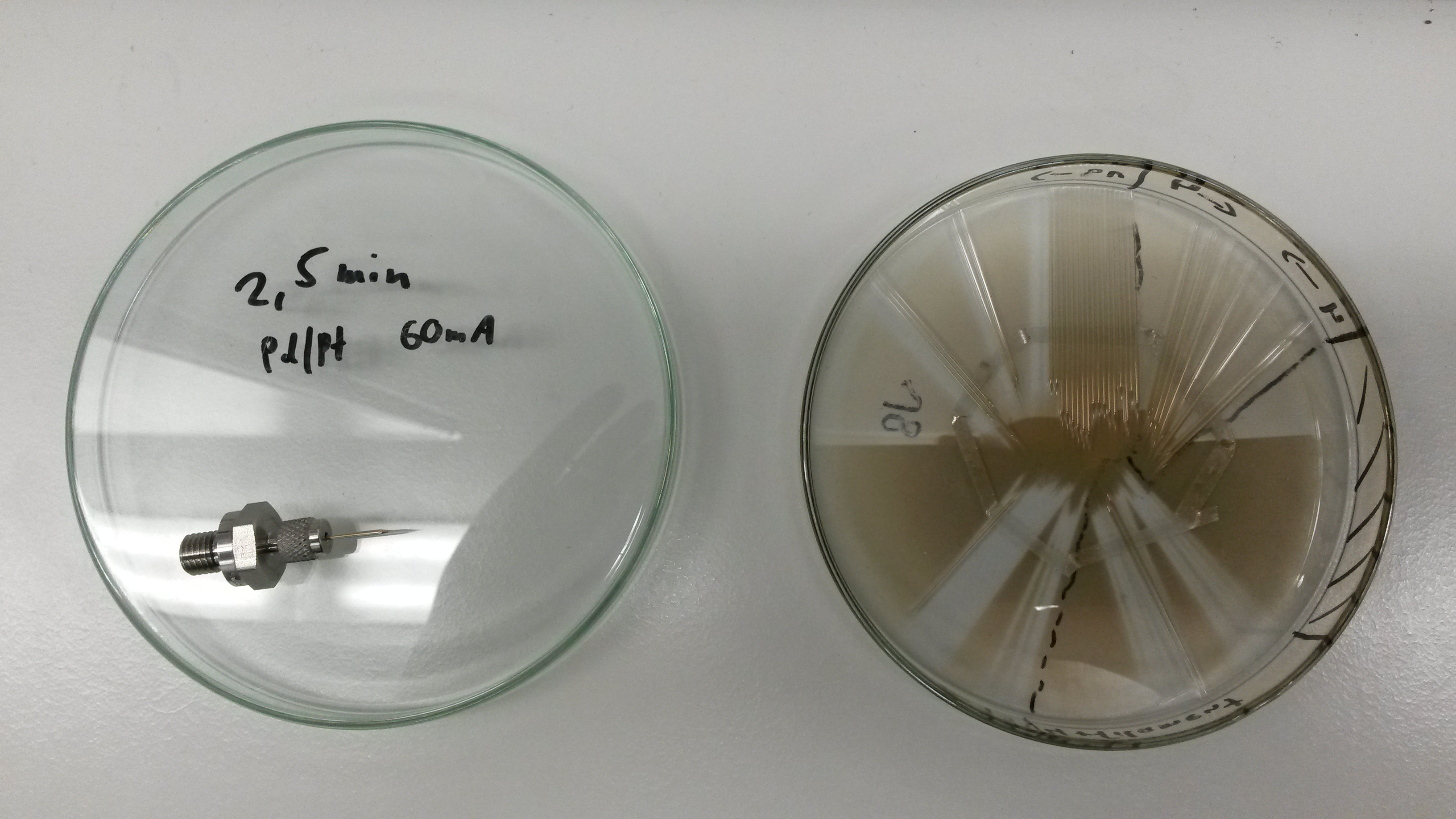nESI (nano Electro Spray Ionization)

The sample solution is sprayed from a gold coated needle to which a high voltage is applied. The generated spray contains droplets in the range of 100 to 500nm, some of which will contain the biomolecular ion of interest. The spray is introduced into vacuum where ions desolvate. The ESI process leads to highly charged gasphase ions, which then can be analysed by a time-of-flight mass analyser.

Protein complexes can be tansfered into the gas phase intact. Activation in the gas phase - through collision induced dissociation - leads to charge driven unfolding of a periferal protein followed by its dissociation. In general one or two peripheral proteins can be dissociated from a complex this way and identified.

Our Synapt G2S (Waters) is equipped with a 32k Quadrupol enabling us to investigate large complexes.
An additional feature is the ion mobility option, which allows to separate gas phase ions according to their collision cross section.
The ions travel through a chamber filled with inert gas molecules under the influence of a weak electrical field. Larger ions undergo more collisions than smaller more compact ones, allowing for the separation of differently sized ions even if they have the same mass.
